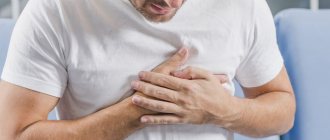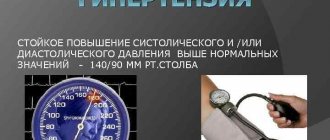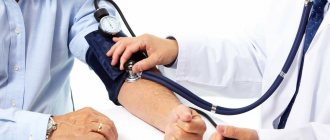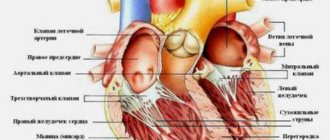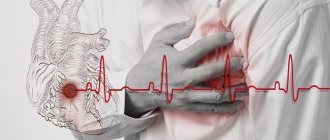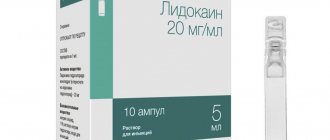Such manifestations can occur several times a year, a month, a day, or even not stop; they can last seconds, minutes, several hours or days in a row. In this article we will consider, specifically, episodic interruptions in the functioning of the heart.
Of all the variety of arrhythmias, the most common cause of these sensations are:
- extrasystole (extraordinary contractions of the heart)
- short paroxysms of tachycardia (episodes of heart rate acceleration)
In addition to interruptions in the functioning of the heart during an attack, you can experience the following types of discomfort:
- shortness of breath
- nagging or burning pain in the chest
- dizziness
- feeling of lack of air
- feeling of fear
There are a great many options for extrasystoles. But their main division is supraventricular (less dangerous) and ventricular
By origin, extrasystole can be of organic or functional origin.
When do interruptions of functional origin occur?
The functional nature of extrasystoles is spoken of when a person does not have significant heart damage, and the main cause of interruptions is a temporary change in the electrolyte composition of the heart.
Most often in this situation, extrasystoles occur in the following cases:
- Emotionally labile persons with signs of neurocirculatory dystonia
- Severe mental or physical stress
- Smoking
- Coffee abuse
- Alcohol abuse
- Use of narcotic drugs
- Energy
They may also occur against the background of the following diseases and conditions:
- Stomach ulcer
- Cholelithiasis
- Hiatal hernia
- After a large meal
- In a dream
- Hormonal disorders (for example, thyroid dysfunction in the form of hyper/hypothyroidism)
- Cervical osteochondrosis
- When taking certain medications
Symptoms of arrhythmia
Arrhythmias may not appear. A doctor can detect an arrhythmia before it shows any signs during a routine clinical examination. But more often, heart rhythm disturbances cause noticeable changes in the condition, which include signs:
- Feeling of palpitations and chest pains
- Very fast heartbeat
- Extremely slow heartbeat
- Chest pain
- Shortness of breath
- Dizziness
- Loss of consciousness or feeling close to fainting
Even such significant symptoms of ill health do not always indicate a serious problem. Very often, people who experience an arrhythmia do not suffer from severe heart disease, while a person with a life-threatening arrhythmia may not have any complaints at all.
Normal heartbeat
The heart consists of 4 cavities. On each side, on the right and left, there are two pumps: on top of the atrium and below - the ventricles.
During cardiac contraction, chambers with a thin muscle layer and smaller sizes contract, helping to fill the relaxed ventricles with blood. Contraction begins when the sinus node—a small group of cells in the right atrium—sends an electrical impulse that causes both atria to contract. The impulse then travels to the atrioventricular node, located in the very center of the heart and lying at the junction of the atria and ventricles. Leaving the atrioventricular node, the impulse passes to the ventricles. As a result, the latter contract and push blood to all organs.
In a healthy heart, this process occurs evenly and constantly with a heart rate of 60-100 per minute in a calm state. In athletes, especially athletes at rest, the heart rate is usually less than 60, since their heart is much more trained than that of an ordinary person and has great muscle strength, pushing out a large volume of blood per contraction. In children, on the contrary, the pulse is normally more than 100 beats per minute, and in infancy it is 140-160 beats per minute.
When do interruptions in the functioning of the heart of organic origin occur?
As for extrasystoles of organic origin, this is the result of pathological changes in the heart itself in the form of the following diseases:
- IHD, such as previous myocardial infarction
- myocardial dystrophy
- cardiosclerosis
- various channelopathies (long QT syndrome, Brugada syndrome)
- the presence of congenital additional pathways (for example, WPW syndrome)
- dilated cardiomyopathy
- atrial enlargement
- myocarditis
- acquired and/or congenital heart defects (for example, atrial septal defect or aortic valve stenosis)
- pericarditis and other heart diseases
The reason for this extrasystole is the presence of a focus, for example, scar tissue, which has an unfavorable prognostic value.
The causes of paroxysmal (episodic) heart rate accelerations are approximately the same. With all the components, supraventricular rhythm disturbances are safer, in contrast to ventricular ones.
Extrasystole
Extrasystole is an extraordinary contraction of the heart muscle.
Its forms:
| By localization | Sinus Atrioventricular Atrial Ventricular |
| By frequency per hour | Rare (<10) Mid frequency (10–30) Frequent (>30) |
| By density | Single Pairs |
Extrasystoles occur for the same reasons as tachycardia. Often provoke the onset of paroxysm of tachyarrhythmia.
Extrasystole in most cases is asymptomatic, sometimes there are:
- interruptions in heart function;
- a feeling of increased heartbeat or stopping, cardiac arrest.
With heart failure, the course of the disease worsens and the risk of death increases. Single extrasystoles occur in healthy people and do not require correction. They respond well to treatment.
Treatment of extrasystole associated with damage to the heart muscle includes:
- beta blockers;
- ablation of foci of high-frequency extrasystole.
What research should I do?
You can find out exactly what type of rhythm disturbance you have in the following ways:
- Electrocardiography
- 24-hour ECG monitor (taking into account the inconsistency of interruptions, they may not be “caught” on the monitor, especially if the interruptions are a significant but rare concern; in this situation, a monitor is necessary to exclude contraindications to antiarrhythmic therapy)
- Transesophageal study (TEES), sometimes this method is called transesophageal EPI (is additional, if there are clear indications, and consists of stimulating arrhythmia through the esophagus
- Intracardiac electrophysiological study (EPS) is an invasive method and is the “gold standard” for diagnosis, relief and surgical treatment of various types of arrhythmias. A puncture is made either in the area of the wrist joint or in the area of the inguinal ligament and then inside the vessel the guide goes to the heart
- Echocardiography to exclude structural pathological changes in the heart leading to arrhythmia
- Stress echocardiography (Stress Echocardiography) is, roughly speaking, an ultrasound of the heart under load. This method is necessary to exclude the ischemic nature of ventricular extrasystoles.
In patients, especially after 40 years, the appearance of ventricular extrasystoles in 70% of cases is associated with a deterioration in the blood supply to the heart, due to the appearance of atherosclerotic plaques in the coronary arteries of the heart (remember that these arteries supply blood to the heart itself and are not visible on echocardiography (ultrasound of the heart).
When performing a stress echocardiography, we do not see these vessels, but we can assess the degree of their functionality.
For example, if the coronary arteries are blocked by more than 70%, at the height of the load, we will see a temporary (reversible) deterioration in the functioning of the heart muscle and depending on which part of the heart the deterioration occurred, with a high degree of probability we can judge which of the coronary arteries is affected by a significant plaque ).
Treatment
Help before diagnosis
When heart palpitations occur, a person needs to immediately sit down and take a comfortable position. In case of rare heart contractions, it is better to lie on your back with your legs slightly elevated. It is necessary to provide access to fresh air by opening windows or doors. Usually the state of health returns to normal within a few minutes. If the patient feels worse, complains of pain in the precardiac region or fainting, emergency medical attention is required.
Conservative therapy
Effective treatment can begin only after the causes of cardiac arrest have been established. Patients with severe illness receive intensive parenteral therapy in the hospital or intensive care unit, but in most cases outpatient treatment is sufficient. To eliminate the root cause of the symptom, normalize heart function and regulate the heart rate, the following is prescribed:
- Antiarrhythmic drugs.
In the arsenal of cardiologists there are 4 classes of drugs that are indicated for arrhythmias. They start with monotherapy, but if high doses of drugs are ineffective or intolerable, the optimal result is shown by a combination of 2-3 drugs. - Beta adrenergic agonists.
The drugs improve conductivity and increase heart rate in patients with atrioventricular block. Medicines are used in short courses. If therapy is ineffective, pacemaker installation is considered. - Anti-inflammatory drugs.
For myocarditis and rheumatic diseases, NSAIDs are recommended, which reduce inflammatory damage to the myocardium. In severe systemic processes, it is advisable to treat with glucocorticoids. - Metabolic agents.
Antihypoxants and antioxidants are widely used, which improve myocardial function in conditions of insufficient blood supply and prevent free radical oxidation. To increase the contractility of the heart muscle, ATP drugs are administered.
What to do if “heart” symptoms appear?
You should immediately consult a doctor, do an ECG and ECHO-CG, and, if necessary, undergo other tests. In such situations, it is usually better to appear panicked than to carelessly miss the onset of a serious illness. If you have already been diagnosed with heart problems, you should definitely carry the medications prescribed by your doctor with you so that, if necessary, you can take them on time. And, of course, you need to lead a healthy lifestyle, get enough sleep, eat right - this will allow the heart to work smoothly and without failures for a very long time.
Temperature increase
If your body temperature “jumps” for no reason and there are no symptoms of a cold or other infections, you should consult a cardiologist. After all, such a manifestation may indicate the development of serious inflammatory heart problems, such as myocarditis or endocarditis. Please note that “heart” temperature has certain signs: even a slight increase is always accompanied by severe chills, it can last from 2 weeks to several months, and its severity can vary from 37.5 ° C to high numbers (38 or more).
Question answer
Why is a rapid heartbeat dangerous?
Anemia
A disease that develops due to insufficient hemoglobin in the body. It is provoked by problems with the intestines, various infectious diseases, deficiency of vitamins and microelements.
Classification of anemia
Thus, vitamin deficiency anemia can cause shortness of breath and a number of other unfavorable symptoms, including:
- increased heart rate;
- impaired coordination and reflexes;
- general weakness;
- temperature increase.
Anemia - symptoms
Problems such as an increase in liver size and various types of mental disorders may occur.
Why does my heart beat irregularly?
Interruptions in the heart have their own causes: physiological and pathological, which are familiar to almost everyone. The first group includes: psycho-emotional overstrain, a stressful situation, overwork, abuse of alcohol or nicotine, strong tea, coffee, energy drinks, taking hormonal drugs, diuretics, bronchial and antispasmodics, and antihypertensives.
This also includes atmospheric and natural phenomena, meteosensitivity, physical activity, climate change, climbing mountains, to heights, and sudden changes in body position (orthostatics). With the removal of the trigger, the arrhythmia disappears.
The second group includes many diseases, which, for reasons of interruptions in the functioning of the heart, are divided into cardiac and extracardiac:
| Cardiac causes | Extracardiac causes |
| IHD: angina pectoris of any form, AMI, post-infarction cardiosclerosis, painless latent myocardial ischemia. Symptoms: retrosternal discomfort, chest pain with varying irradiation, relieved with nitroglycerin and rest | VSD: headache, feeling of suffocation, fear, blood pressure surges, anxiety |
| Hypertension with cephalgia, vertigo, floaters before the eyes, ringing in the ears | Thyrotoxicosis: mood swings, sleep disturbances, increased excitability, dyspepsia, dry oral mucosa, itchy skin |
| HF with shortness of breath and pasty tissues of the face and legs | Adrenal tumor: tachycardia, hypertension, shortness of breath |
| Heart defects: congenital or acquired | Anemia: shortness of breath, vertigo, pale and dry skin, brittle nails, hair |
| Myocarditis with arrhythmias, hyperthermia, shortness of breath, arthralgia, pastosity, skin rashes | Acute blood loss – precedes anemia and has similar symptoms |
| Cardiomyopathy with increasing weakness, dyspnea | Hyperthermia of unknown origin |
| Infectious endocarditis with prolonged low-grade fever, fever, skin rashes, arthralgia, myalgia, shortness of breath, edema | Electrolyte imbalance with muscle cramps, dyspepsia, irritability |
| Pericarditis with similar symptoms: exudative with effusion and adhesive (dry) | ARVI |
| PE – spontaneous shortness of breath. fever, fainting, often due to thrombophlebitis | Exacerbation of chronic pathologies of the gastrointestinal tract and lungs |
Is there prevention?
There is no specific prevention of arrhythmias. Most often, this is either a transient, spontaneously occurring condition that disappears after eliminating the trigger that caused the heart rate disturbance, or a symptom that accompanies severe somatic pathology. In both cases, there is no need to talk about prevention.
Of course, you need to adhere to a healthy lifestyle: proper nutrition, weight control, lack of physical inactivity, uncontrolled use of medications, extremely heavy physical and psycho-emotional stress. We need reasonable and regular rest, walks in nature, before bedtime, and hardening. Annual medical examination is required.
If the heart beats intermittently, unevenly for reasons of extracardiac origin, the situation is completely curable provided the underlying pathology is corrected. For cardiac triggers, prognosis is correlated with the degree of blood flow impairment. We must not forget that chronic diseases are constantly progressing and require close attention. Paroxysms are one of the most common causes of sudden death.


